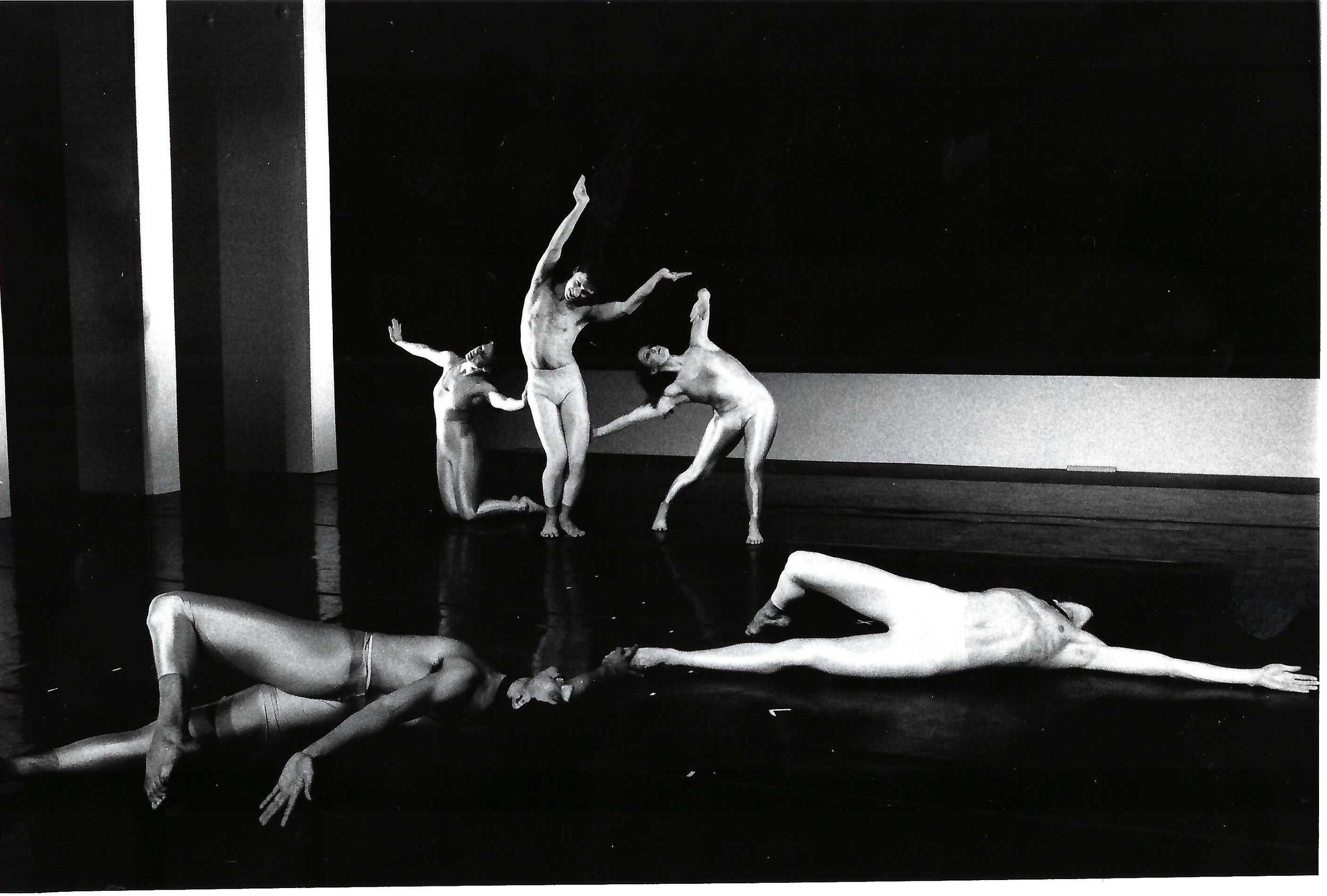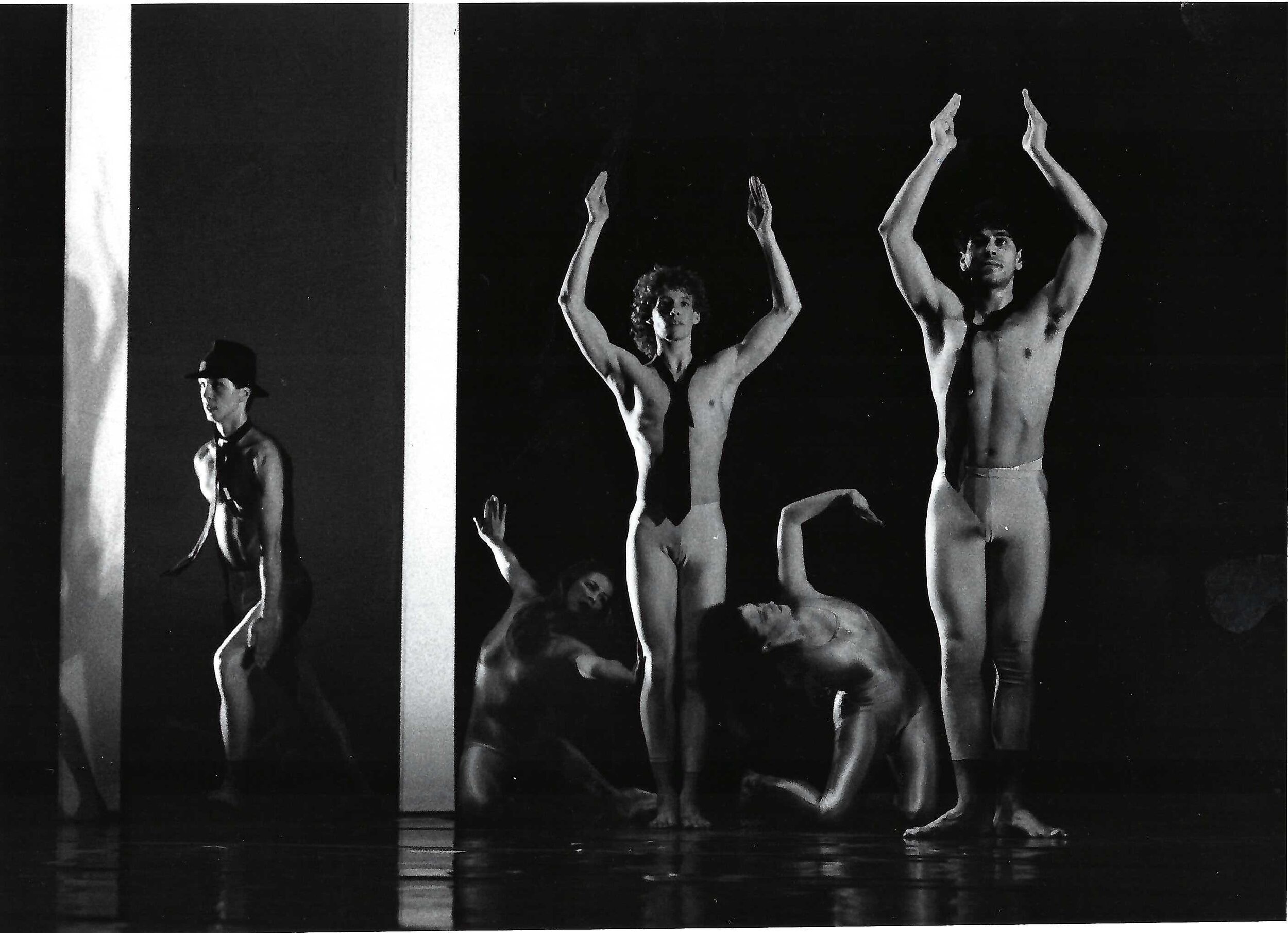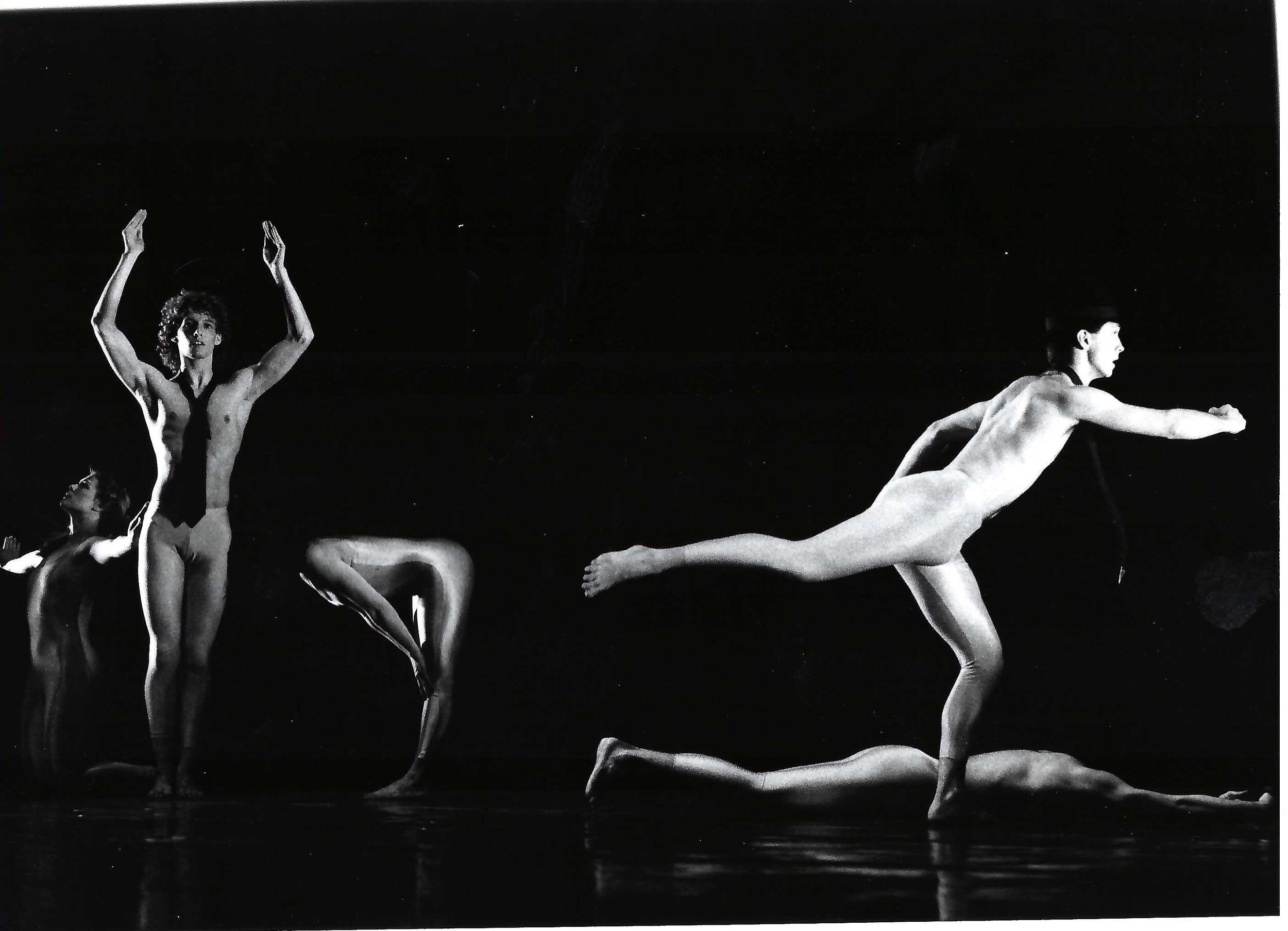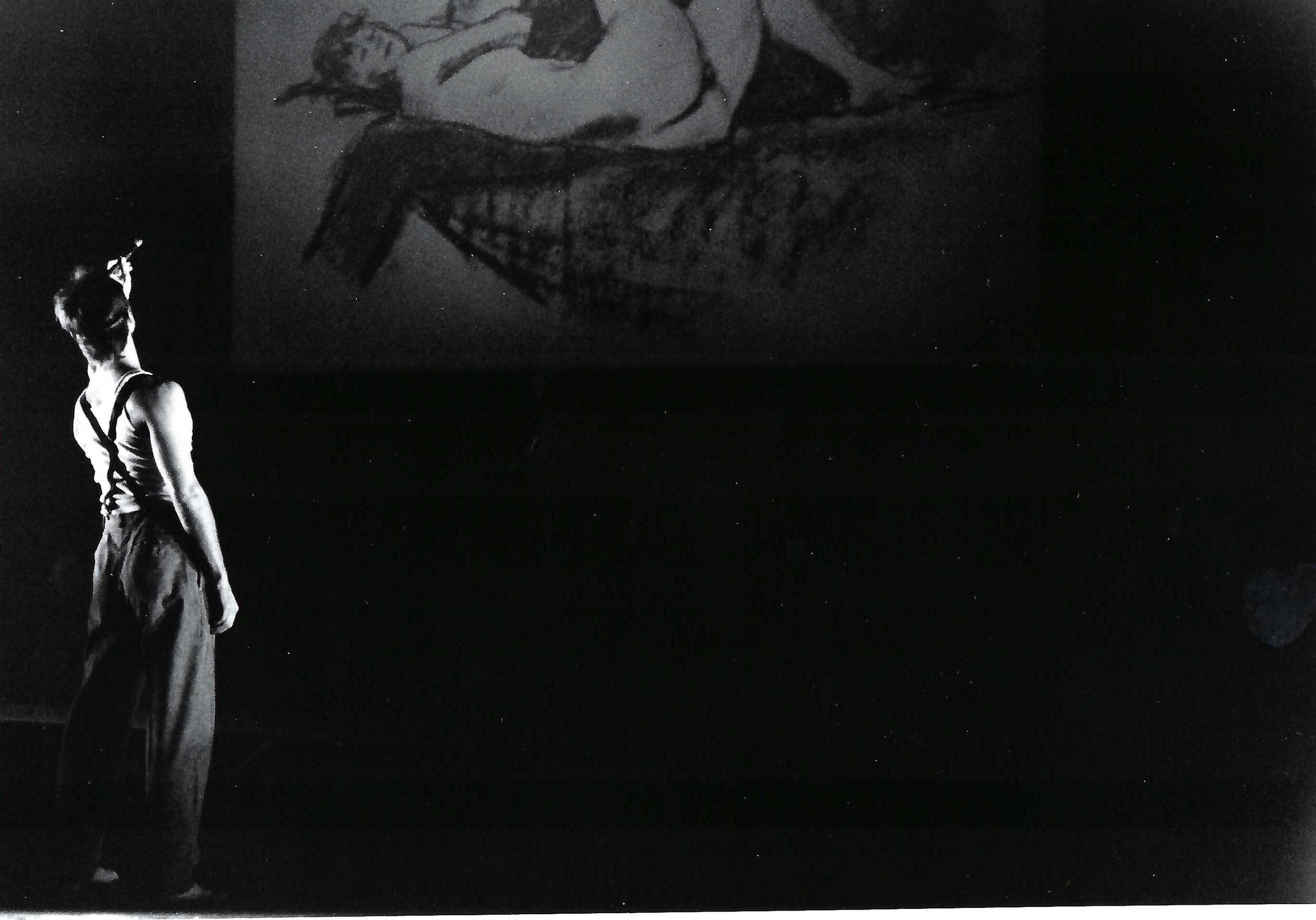Title: People in the Sun
I. Sunlight II. House by the Railroad III. Two Comedians
Premiere: March 12-15, 1987, performed by the University Dance Company, Power Center, Ann Arbor, MI. Subsequently performed April 1987 at the Merce Cunningham Studio, NY, NY; and in an excerpted version by Ann Arbor Dance Works at the the Betty Pease Studio Theater, Ann Arbor; Minor Latham Playhouse, NY, NY.
Performers at premiere: Eric Bradley, Thomas Cocco, Victoria Lundell, Jean McGregor-Wiles, James Moreno
Duration: 20 minutes
Music: Edward Hopper in Three Parts: 1. Sunlight 2. Trains 3. Women, by David Borden,
Costumes and set design: John Schak
Lighting Design: Mary Cole
Description: Structured in three distinct sections, the dance was inspired by the moods and content of Edward Hopper’s paintings. For example, in evoking the painting “House by the Railroad,” I tried to glean the emotional tenor of the painting, as much as its form and content. As stated in my choreographic journal, 12/1/1986: “Make the House by the Railroad, after the graphic set-up, into an abstract architectural dance about leaning and support, gleaning the essence of the picture/sensation.” I had read that Hopper and his wife, often restless, would take off on long road trips. At one point in the House by the Railroad section, the dancers form the four walls of a room, and a hat dangles from a string above. Hopper, played by Thomas Cocco, grabs the hat and sets out on a journey. The dancers portrayed the train tracks as well as the trains along the track, and there is a moment when they are people by the tracks, setting a penny on the tracks.
The score by David Borden was created specifically for this work, and had a monumental sound. I exchanged rehearsal videos with him over several months, and he sent me music along the way. The program, scanned below, provides detailed program notes including information about the particular paintings, several of which were projected onto the backdrop within the dance. I was interested in the tension and the distance Hopper created between his proximate figures. In rehearsal, it was difficult for me to animate the stillness of the paintings. Eventually, I began to use hopping as a locomotion for entrances and exits. While a reviewer saw this as a bad pun, to me it captured Hopper’s slow and deliberate and approach to painting. He was not prolific, and his paintings each took a long time to create. Designer John Schak also created paintings that were projected, based on his ideas of preliminary sketches Hopper might have created for his paintings. The final section of the dance is based upon the relationship between Hopper and his wife Jo. There was often tension between the married couple, and I had read that Edward was taciturn whereas Jo was agitated. In the final moments, Jo has to open door after door (human doors created by the other cast members) to reach Edward to take their final bow.
The set for the Power Center stage included white flats that covered the side wings, creating a sense of a vast white canvas. Lighting designer Mary Cole worked carefully with the paintings to contour the qualities of light found in Hopper’s paintings.
I later created a shortened version of the dance, “Excerpts from People in the Sun,” which was more easily mounted in other settings. I mostly used materials from the 2nd and 3rd sections for this shortened version. For the Minor Latham Playhouse performance, I played the role of Jo Hopper, dying my hair red for the role. The original Jo Hopper role was played by Jean McGregor-Wiles.
Power Center 1987 premiere program
Program for Excerpts from People in the Sun AADW 1989
Ann Arbor News review Rudnicki
The New York Times review by Jennifer Dunning, April 2, 1989
Ann Arbor News review McNamara
The Village Voice review Deborah Jowitt (shortened version of dance for Dance Uptown)
Choreographic notes original version
Costume and prop list, Excerpts from People in the Sun
Choreographic notes shortened version

Victoria Lundell, Thomas Cocco, Jim Moreno in 1st section, "Sunlight"

Full cast in 2nd section, "House by the Railroad"

Full cast in 2nd section, "House by the Railroad"

Full cast in 2nd section, "House by the Railroad"

Eric Bradley and Jean McGregor-Wiles in 3rd section, "Two Comedians"

Thomas Cocco as Edward Hopper in 3rd section, "Two Comedians"

Jessica Fogel as Jo Hopper in shortened version, Dance Uptown NYC April 1989